Posts in Category: News and Events
Tips to Get You and Your Pet Through Fireworks

Summer is here and full of celebrations, but these celebrations can induce high stress and anxiety in our pets! With fireworks ramping up, it is important to recognize the signs of anxiety and be prepared.
Here are some tips on how to get through firework season:
Create a Safe Space
- Pets usually do better if they are not left home alone during fireworks events. This may not be possible, so creating a safe space is important!
- Keep windows, doors, and curtains closed to minimize the noise and light.
- Consider a white noise machine for the area they like to hide.
- White noise or classical music is preferred over radio and TV as human voices or loud sounds can worsen anxiety.
- “Through a Dog’s Ear” is a series of classical selections that has been shown to have calming effects on dogs. This is available on Spotify and Apple Music!
- Add pheromones (Feliway for cats and Adaptil for dogs) around the safe space.
- Pheromones mimic the calming scent of the mother and have been found to decrease anxiety in cats and dogs.
Extra Exercise
- Play with their favorite toys or go on a longer walk to help tire them out.
- If possible, head out for the long walk before the sun sets.
- Double-check the fit of the collar and harness before going outside as the chances of loud noises scaring them off is much higher.
Encourage Hydration
- Fear makes dogs pant and summer is extra warm, so make sure to provide fresh water in multiple spots, particularly if they like to hide.
Calming Supplements and Sedatives
- If your pet has had bad reactions to fireworks or other noises in the past, reach out to discuss available supplements or sedatives to help keep them calm!
Signs of anxiety can include shaking, panting, drooling, excessive vocalizing, hiding, packing, and bolting. Escape attempts usually involve hiding in the home but the source of noise can be very confusing, so some dogs may want to escape to the outside. In fact, American pet advocacy groups point out that Independence Day is the busiest day of the year in shelters with pets getting lost or hurt.
Tags and Microchips
- 1 in 3 pets go missing in their lifetime. Ensure they are wearing a collar tag and microchip with up-to-date information.
- Don’t know your pet’s unique microchip number? Check your veterinary or adoption paperwork or call a nearby shelter or veterinarian to have your pet scanned!
- If you do not know the brand of the microchip, visit the American Animal Hospital Association (AAHA) Universal Pet Microchip Lookup to find the manufacturer so you can contact them to provide accurate contact information.
And remember, firework debris can be present the morning after – and can be toxic! Watch out for debris and other items on the ground.
Lastly, Medical District Veterinary Clinic will be closed in observance of Independence Day on Monday, July 4, so please make sure to note the number and address to the closest emergency clinic.
We wish you and your beloved companions a happy and stress-free holiday!
Dr. Valbuena
Around the World with Fluffy and Fido
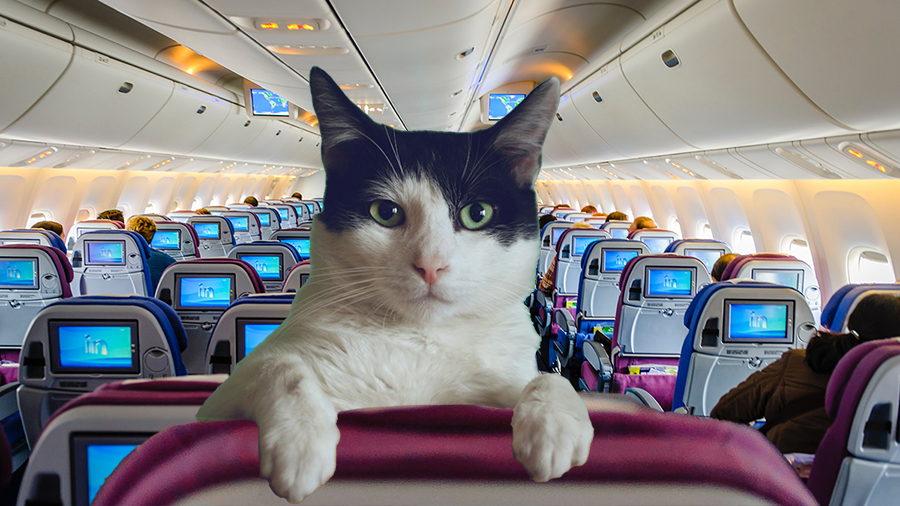
As most of us start returning to normal (well, at least a “new” normal), a lot of us are starting to make plans for new adventures to new places. For those of you who want to take your furry family members, your first thoughts may be about what size carrier you will need, or if your pets will need something to calm their nerves. But first and foremost, you should familiarize with yourself with this website:
https://www.aphis.usda.gov/aphis/pet-travel
That’s because the almost every animal that crosses international borders needs approval from the federal government, the U.S. Department of Agriculture Animal and Plant Health Inspection Service to be specific. Each nation on the planet has its own set of requirements for an animal to enter that country, and a USDA-certified veterinarian needs to sign off that your pet has met those requirements.
This process can be as simple as keeping a rabies vaccine up to date (Germany) or as complicated as sending blood samples across the globe to be tested for certain diseases well before their little paws get anywhere near the airport (South Africa). It can sometimes take months of preparation (Hawaii and Australia), or strict time frames that require multiple pet visits (England).
Luckily, all the doctors at the Medical District Veterinary Clinic have USDA certification to complete these health certificates, and we can help guide you through the process making sure you cat or dog can safely travel.
But there are a few things that we ask of you:
- Notify our clinic as soon as you have any inclination that you may want to travel with your pet. This process is T-E-D-I-O-U-S, it takes a lot of our time to ensure that your pet has everything it needs, and especially if you have let your pet become overdue for vaccines, it can add months to prepare your pet for travel.
- Understand that this can be costly. It takes a lot of people and time to ensure that your pet qualifies to travel. The bureaucracy can be very frustrating, but remember that it is in place to ensure the same transport for not only your pet, but for the public as a whole. Plus, some countries require tests that can cost several hundred dollars (Aloha, Hawaii and Australia!).
- Plan to do some legwork on your own. Since COVID, the USDA APHIS office has gone digital in many ways. All paperwork has to be submitted electronically and then mailed back to you. That means you’ll have to provide a rabies certificate (if we haven’t vaccinated your pet) and a pre-paid shipping label in PDF form to be digitally submitted.
Finally, if all of this makes you go cross-eyed, there are companies that will help you through this whole process. They can make your life and ours a lot easier too.
Happy travels and, before I sign off, I’d like to say “Welcome!” to our new doctors, Dr. Valbuena, Dr. Barragan, and Dr. Calderon! I am beyond excited to have the opportunity to work with these exceptional veterinarians.
— Dr. Alyssa Kritzman
What Does Earning a DVM (Doctorate of Veterinary Medicine) Entail?
Should I go to veterinary school? Although there’s no right or wrong answer, if it’s something that you’ve always dreamed about, if you have passion and drive and can’t see yourself doing anything else because that is the one thing you’ve always wanted to do since you were little, then the answer is ABSOLUTELY.
Yes, it will be hard. Yes, it will be exhausting at times. And yes, you will have to give it your absolute all, but I promise that after all of that hard work, it will be one of your proudest moments when you finally say, “I did it, I AM a veterinarian.”
School, School, and More School
Now, of course, having passion and drive is great, but how do you really get there? Well, if I count the number of years that I have spent in school (starting from my very first day in kindergarten; yes, that counts too!), it would be about 4/5ths of my life. To be exact, I have spent 22 years at an educational institution of some sort.
Supe que quería ser veterinaria desde muy joven, por eso decidí asistir a la Escuela Secundaria de Ciencias Agricultural de Chicago.
Dra. Angélica Calderón
Let’s take this way back. Now that you got through elementary school and graduated high school, you need to go to college and complete various prerequisites needed for veterinary school. (Prerequisites include the dreaded subjects of physics, chemistry, organic chemistry, anatomy, and biochemistry, just to name a few). Every veterinary school is different so it is important to keep up with the admissions websites and keep track of what is required for their application process.
There is no specific major required, as long as all of the prerequisites for the veterinary school you are applying to are met. And finally, the GRE—the Graduate Record Examination—is required for most veterinary schools. The GRE tests students on verbal reasoning, quantitative reasoning, critical thinking, and analytical writing skills.
Although getting good grades is very important and obtaining a high GRE score will certainly be very appealing to the admissions committee, the application process entails much more.
Grades Aren’t Everything
Yes, you heard that right. Let’s just say that you don’t have to be #1 in your class to get into veterinary school. During the application process, experience, extracurricular activities, and most important letters of recommendations are aspects that can be of great value. It is very important to start working on these parts of the application very early.
I knew that I wanted to be a veterinarian at a very young age. That is why I decided to attend the Chicago High School for Agricultural Sciences. Did you know they have one of the last standing farms in Chicago? I was fortunate enough to take animal science at CHSAS for two years and even attended veterinary camp at Michigan State University with my class. My animal science teacher was actually a U of I veterinary graduate, and she wrote one of my letters of recommendation.
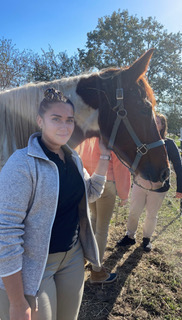
During my time in college at the University of Illinois-Chicago, I was part of a club called ASB (Alternative Spring Break), where we traveled to various states and participated in volunteer projects. I traveled to Kentucky on two separate occasions. The first trip was to Independence, Ky., where I worked with the Milestones Equestrian Achievement Program. There I learned and cared for their horses and assisted in their equestrian program. The second trip was to Mammoth Cave, Ky., where I was able to cave dive and count bats as they were undergoing a bottleneck due to poor water conditions from local landfills. I was also able to test the water from various caves and educate elementary school students on the importance of keeping local waters clean, as water quality has a big impact on local animal populations.
My favorite trip was to Emerald Coast Zoo in Crestwood, Fla., where I was able to help a very passionate family restore an old zoo they had purchased. During my time at UIC, I also worked at Archer Animal Hospital for two years where I had various duties, as I was one of only two employees in the whole clinic. Working alongside Dr. Vinu made my passion for veterinary medicine even greater.
As you can see it is important to start early, not only with the educational requirements for veterinary school but also with animal experiences and resources for letters of recommendation. In high school I was able to get farm animal experience, during college I was able to get exotic animal experience, and while working as a veterinary assistant I was able to get small animal experience. All of these experiences also led me to great resources for letters of recommendation.
Finally Got into Veterinary School!!! Now what?
If that sounded hard and complicated, well, that was the easy part.
You got into veterinary school. Congratulations! Now things are going to get interesting. Different schools have different curriculums, but I’ll talk about my experience. First year was quite tough for me. It was a new experience being away from home and there was so much information to absorb.
First year consisted of learning the “normals” for various species, second year consisted of learning the “abnormals” of various species, and third year was clinical applications and putting the big picture together.
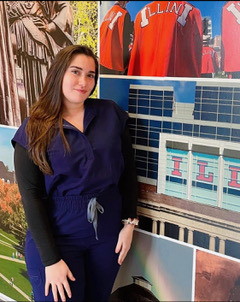
Read more about her.
Not only did we have to learn anatomy, physiology, neurology, pharmacology, oncology, ophthalmology, and all the other “ology’s” you can think of, but we had to learn them for various species. That not only included cats and dogs, but also horses, cows, chickens, other farm animals, exotic animals like reptiles, guinea pigs, rabbits, pet birds, etc.
Fourth year was my favorite year in veterinary school, apart from having to take the NAVLE (North American Veterinary Licensing Exam), which is the veterinary national boards exam required to get licensed to practice veterinary medicine. Things finally made sense and I was putting all of my hard work into practice. Everything that I had studied and learned paid off, and it was the best feeling ever. I was finally a veterinarian.
A Beautiful Career
I always knew that I wanted to work in small animal primary care, which is why I decided to start working after graduation. However, that’s not the case for everyone. Some of my classmates have a passion for exotic animals or want to specialize after graduation. That calls for additional schooling. Not only do they have to do a rotating internship, but they also have to do a three-year residency and take another board exam to become a specialist. That’s another 4+ years of school, but I won’t get into those details.
Veterinary medicine is a very beautiful and rewarding career. It takes a lot of work, motivation, passion and drive to get to the finish line, but with the right mindset, anything can be accomplished.
– Dr. Angelica Calderon
Make Room for Kitty

The spring is one of my favorite times of the year. Not only do I look forward to the beautiful weather, but I also look forward to seeing lots of adorable, newly adopted kittens. I can’t help but smile from ear to ear whenever I see them! I have been saying for months that I have kitten fever. Every day it is getting more difficult not to adopt one of my own.
Next month is the height of “kitten season.” It’s when litter after litter of kittens are born, taken to shelters and rescues, and in need of new homes. Unfortunately, there are far more pets than available homes, which further adds to pet overpopulation. American Humane celebrates Adopt-A-Cat Month each June to bring awareness to this situation and in hopes of encouraging more people to adopt cats in need of a loving home.
The pandemic has made the operations of shelters and adoptions more challenging, which makes Adopt-A-Cat Month even more important. While many people have already welcomed new four-legged family members into their families, there are still many precious and loving cats in need of a forever home. To find your forever feline, check out the websites of shelters and rescues and visit to see them in person. Be prepared to be overwhelmed by the cuteness overload, and potentially leave with multiple cats!
To help with this process, there are many resources available to help you. Many organizations provide information to guide you through this process. For example, American Humane provides literature on their website including A Cat Adoption Checklist and Introducing Cats (And Dogs) to Cats. You can also contact us if you have any questions regarding adoption. We will do whatever we can to help you find the right cat for you!
If you are unable to adopt, there are other ways to help the many pets in need. Donations (such as monetary gifts and food)can be made to local shelters and rescues. Volunteer opportunities are often available.
Adopt-A-Cat Month is almost here, so you have plenty of time to find your purrfect feline companion!
Amber Slaughter, DVM
Photo from our Instagram account.
Seizures to Shining Seizures
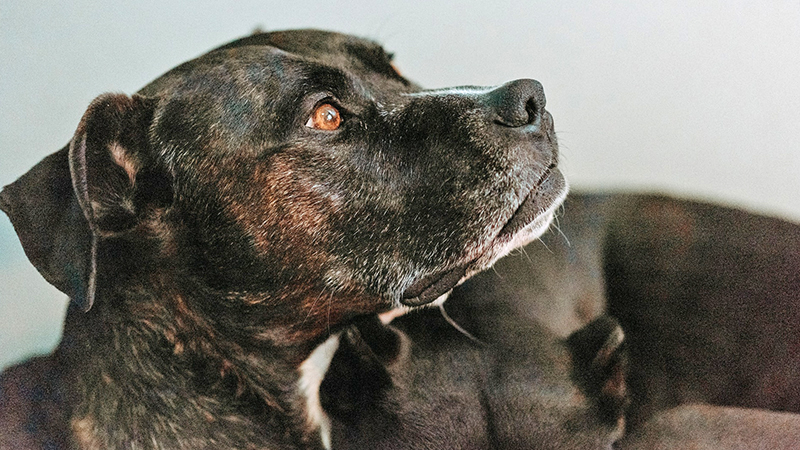
Oh, the nostalgia of COVID springs past. The smell of fresh crocus buds mixed with a new pandemic mask is one that evokes awakening. The freshness of April baseball overlapping with the anxiety of crowded super-spreader events, weddings, and birthday parties with only limited mortalities makes the body and brain feel young again. Socially distant first dates are in the air and all the Spring kids playing Legos together over Zoom brings back the hope squashed by the constraints of Winter kids playing Legos together over Zoom just weeks ago. The dogs and cats can feel the weather changing and with it, ramp up their dog and cat A-game. And with that, I end my introductory ramblings and segue, quite unnaturally, into a discussion regarding … your cats’ and dogs’ general neurologic behavior.
There’s This Weird Thing that Happens…
As always the bearer of angst-inducing theoretical scenarios, I would like to evoke a scene that is relayed to me often that goes like this. A dog is doing generally well. No real issues. She is eating and drinking fine, seems to be getting along with the new dog, loves to take walks, yes, there are no issues. But [hesitates for a moment], there’s this weird thing that happens every so often, I am told, and it’s probably nothing but she seems to just stare off into space every once in a while, acting like she’s not there. Then she stops, licks her leg for a few minutes, and then seems to come to and then there’s nothing wrong.
The cat version is usually something similar but often involves chasing a fly (or dust) and then twitching for a bit. I ask how long it’s been going on and often the answer is vague, like she has always done odd things like that but we thought it was just a thing, like when she goes to sleep and twitches and chases bunnies in her dreams, and sometimes whimpers… So it’s been going on for years, but it seems to be getting worse.
The Movie Version of Seizures
I think when people think of dogs and cats having seizures, they usually evoke the classic grand mal seizure like one you’d see a person have in a movie, or if you know humans with epilepsy, in real life. This big seizure in dogs and cats usually presents with them seeming off for a bit, maybe scared and hiding under the bed or in the closet for a few minutes with dilated eyes and hearts beating fast. Then the seizure will hit causing their front legs to go stiff and stick out. Their back legs paddle, their eyes can start twitching back and forth, and often they vomit, defecate, or urinate. Then comes the post-seizure time frame where they slowly come out of it and seem exhausted and not themselves for a few hours.
This would be the seizure most likely to be portrayed in the Lifetime Movie Network’s scandalous romantic thriller about a single mom/widower with a heart of gold who adopts a dog from the local church auction and then gets more than she bargained for when the dog’s neurologic activity comes between her and her rebellious daughter’s new boyfriend [screenplay pending].
Abnormal neurologic behavior is very far-ranging and sometimes we see cats and dogs act like both of the above examples and sometimes it’s even vaguer or weirder. With hopes that I am not inciting a mob of people calling with thoughts that their animals are having seizures, I will say that seizures often are retroactively understood to be seizures after they progress.
What Is a Seizure?
I’m sure you’ve heard the term “seizure,” but it’s important to know what this means. Here’s a simplified explanation: The brain is constantly activating and suppressing parts of the body through, essentially, electrical and chemical conduction. A seizure is an abnormal event where the brain is essentially not able to control its firing. It loses control of all the carefully metered out activity of the body.
Seizures can be caused by many things, and it’s important to remember that often the cause does not have to be as scary as one first assumes, especially if an animal is otherwise doing well.
Diagnosing Epilepsy
If a dog or cat is not particularly young or old, let’s just say 2 to 9 years old, the first thought is idiopathic epilepsy. This is just a way of saying, to be simpler than I like or actually have ever been, that there is no real reason or cause for the seizure.
We usually get to this diagnosis by two means. The first option is that we examine the animal and perform complete blood work to rule out metabolic and endocrine causes of seizures (like anemia, abnormal electrolytes, etc.). I usually will also focus on the heart to make sure that abnormal cardiovascular or blood pressure activity is not causing events that look like seizures. If all is normal, we monitor and see if the seizures continue while not really affecting a dog’s or cat’s life in a significant way. Sometimes we add anti-seizure medications (which are generally cheap and safe) if things are progressing. If enough time goes by and things seem controlled (with or without medications), it’s most likely epilepsy. Sometimes we have no options other than to go this direction due to limited finances or temperament of the animal.
The second option is more expensive and thorough. This would require an animal to see a boarded neurologist at a specialty hospital and most often have advanced imaging and diagnostics performed, such as an MRI and cerebral spinal fluid tap under anesthesia. I usually would have an echocardiogram of the heart performed for the reasons explained above. If there is no other cause of seizures found, we call it epilepsy, and the management is similar to option 1: monitor and start anti-seizure medications if things are getting worse.
I want to be clear, though, that seizures are serious, regardless of whether they are vague and mild or serious and dramatic. Every seizure has the potential to cause brain damage, and every seizure can be one that is life altering and even fatal. That is why doing a work-up for animals suffering from seizures is important and why we always want to rule out the other things before presuming that this is “just” epilepsy. It may not always be an emergency, but we should always see animals who are having abnormal neurologic events.
Other Causes of Seizures
And then what is it if it isn’t epilepsy? Besides being a repulsive sentence to say aloud, it also is answered by a conversation that everyone wants to avoid.
The first thing that everyone is fearful of, especially if an animal is older, is that seizures are being caused by a brain tumor. Though this is possible, there are other things about which to worry such as liver or kidney dysfunction, low blood sugar, anemia, high or low calcium, magnesium, potassium, chloride, congenital malformations of the brain, trauma, toxins, infections (viral, fungal, bacterial), diseases caused by tick bites, parasites that go to the brain, immune-mediated causes, and in some dogs we see degenerative causes that sometimes can cause our pets to act “senile.”
Unfortunately, in many cases, dogs and cats that are having seizures can be thought to have epilepsy or, at least all of the above are presumed to not be occurring. Later we discover one of these causes, like cancer, had been hiding without detection. If a cat or dog is presumed to not be suffering from all of the above and is diagnosed with epilepsy, the proper course of treatment is often, again, just to monitor or start anti-seizure medications, but if it is not working, sometimes rescue drugs like steroids are tried.
Serious But Often Very Treatable
With fear of ending on a bad note, I want to emphasize that seizures are serious, definitely scary to see, vague and can manifest in a wide-array of abnormal behavior, but often very treatable and controllable. Some dogs, though, just do weird things for no reason. My dog loses his mind whenever he sees a black bag, either on the ground or blowing in the wind, and his behavior is probably insane enough to be viewed as abnormal by most people, but he’s just crazy.
Some dogs and cats just do weird things, and this is not reason to treat your dog for a neurologic event. So let us know if you have questions and enjoy the remainder of your pandemic.
Wear your masks, read your books: https://www.bookcellarinc.com/book/9781501160349
Brett Grossman, DVM
Medical District Veterinary Clinic
Photo by Sandra Seitamaa on Unsplash
Is online shopping for preventives really worth it?
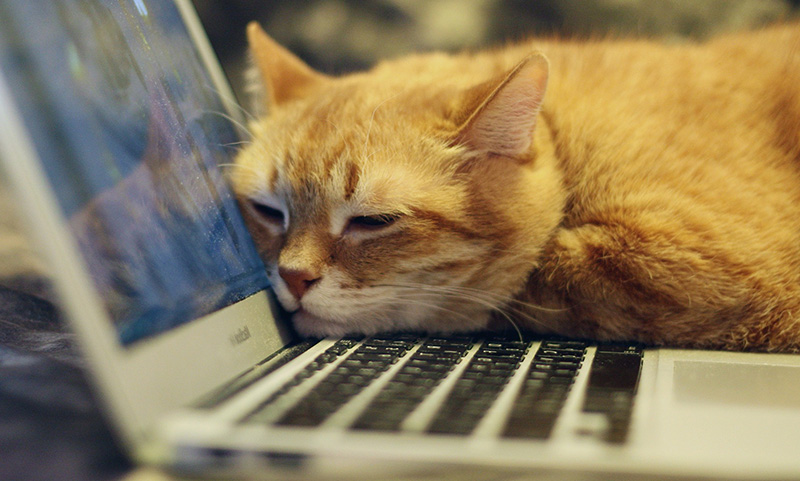
If you’re like my dad, you’ll spend an extra five minutes circling or waiting for that closer parking spot outside of a store. During those five minutes, someone else has parked in a spot that is farther away and is already in the store.
Buying heartworm, flea, and tick preventives online can be just that like. Sometimes going that extra mile to get what may be just a bit of a savings ends up setting you back more than you know.
Online Is Often Not Cheaper
When you look at the prices of a single dose of most preventives, online pharmacies like Chewy.com and 1800petmeds.com are less expensive. But when purchasing product to cover 6 or 12 months, we are actually less expensive.
Right now, for Nexgard, when you buy 6 doses from us, you get an additional 2 free. This is about a $50 savings. And you get 3 free doses—a $75 value—when you buy 9. For Sentinel, when you apply the rebates offered here, we are less expensive when you buy 6 or 12 doses. (These are according to prices as of November 2020.)
Sentinel Spectrum Comparison Shopping
| Our prices w/rebate | Our prices w/rebate | Chewy.com | Chewy.com | |
| Weight class | 6 doses | 12 doses | 6 doses | 12 doses |
| 2-8 lbs | $40.76 | $59.84 | $51.36 | $102.72 |
| 8.1-25 lbs | $42.98 | $65.24 | $53.01 | $106.02 |
| 25.1-50 lbs | $52.40 | $83.12 | $64.61 | $129.22 |
| 50.1-100 lbs | $64.88 | $108.44 | $77.86 | $155.72 |
Nexgard Comparison Shopping
| Our prices | Our prices | Chewy.com | Chewy.com | |
| Weight class | 6+2 doses | 9+3 doses | 6 doses | 12 doses |
| 4-10 lbs | $134.70 | $202.05 | $111.49 | $222.98 |
| 10.1-24 lbs | $136.80 | $205.20 | $114.49 | $228.98 |
| 24.1-60 lbs | $140.88 | $211.32 | $116.49 | $232.98 |
| 60.1-121 lbs | $142.80 | $214.20 | $118.99 | $237.98 |
Preventives Guarantees
Most preventatives have guarantees on their products. For example, if your dog is on Nexgard consistently and does end up getting fleas or Lyme, Merial will cover testing and treatment, including a home inspection of your home in case of fleas, and up to $5000 in diagnostics and treatment for Lyme disease. But this guarantee is often only honored if the products are purchased from a veterinarian. Purchasing from an online source can void the guarantee.
A Final Word
This post is not meant to discourage anyone from keeping their pets protected. We recommend year-round preventives for heartworms, fleas, and ticks for dogs. Cats that go outdoors or live with a dog in the house should also be protected.
So, if you prefer to find these products online, then we will happily approve any online request for all of your up-to-date pets. But remember: if the pricing looks too good to be true online, it often is.
Alyssa Kritzman, DVM
Weighing Heavy on the Hearts of the Tiny
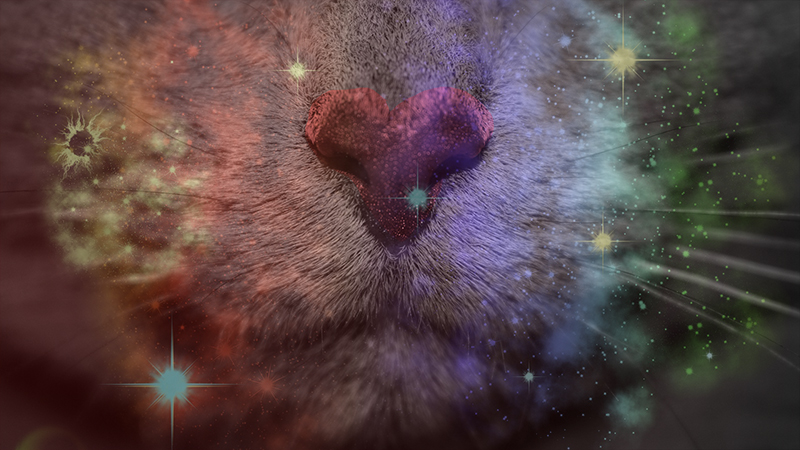
It’s the fifth month of a global pandemic, and you have finally decided to bring your super not-sick cat into the clinic for what will only be a regular annual exam, because nothing will ever happen to her and she is perfect and actually named after a minor character in a science fiction mini-series from the ’70s whose reference you will always be surprised is picked up by your vet who tends to type and talk in run-on sentences.
So all is going well.
You are sure of it.
You are waiting a tiny bit too long and you start to remember how your last sick cat once came to the vet and you had to wait 15 minutes extra and then got bad news. But then I come to your car and say that everything looks good [exhale], the annual blood work is normal on Meow Lamba [exhale], but …
BUT BUT BUT!!!!!! [heart sinks because this is not how the day was supposed to go and–what will it be?]
… but your sweet little cat has a very mild but notable heart murmur. You then hear nothing but a funeral march played on Moog synthesizers because Meow Lamba would want it that way.
As I say “heart murmur,” I see everyone’s face do one of two things: Eyes dilate and widen, mouth slowly goes agape and you are about to fall apart, or the muscles form the physical equivalent of “OK, Doc, be straight with me: how many months do I have left with her?”
I have to intervene immediately and dilute the words a bit, allowing you to fall back to earth and be able to talk out the rest.
And so: heart murmurs. Why do we often say not to worry, and then sometimes tell you to worry? Why do we send you to the cardiologist immediately sometimes, and more often tell you to monitor? Why did your last vet say you can never do a dental on her, and now I am telling you we can?
Let me help you. As with everything, each doctor has her own protocol, but I will give you some basics to consider. Each individual case may be different.
What is a murmur?
Lub Dub-Lub Dub-Lub Dub is the sound of the valves of the heart taking turns to close and effectively push blood through the heart. It’s not the only thing doing so, but gets most of the credit. Occasionally there will be some form of pathology to the valves causing them not to shut properly. Like a rattling screen door that doesn’t fit in the frame after years of humid summers and dry winters, the valves sometimes become misshapen or inflamed, causing the beautiful tell-tale lub-dub of the heart to sound more like lub-a-swish-dub-lub-a-swish-dub.
I liken it to someone turning up the reverb on a snare drum, but this analogy nails it for about none of my patients. So don’t worry when that means nothing to you.
To avoid making this into a veterinary textbook, I am not going to go into the pathophysiology of every reason a cat could get a heart murmur, but there are many: from congenital disorders (cats are born that way), to innocent ones caused by nothing at all, to underlying diseases (hyperthyroidism, etc.), to metabolic status (anemia, dehydration, high pressures, etc.).
The important thing to remember is that a heart murmur can be the result of something very serious, but in itself is not an emergency or an actual indication that a cat’s heart is progressing toward failure. I say this to a lot of clients, but my last cat (who was not named after a minor science fiction character) lived to be about a billion years old and had a Grade 3 heart murmur for all of those years with no clinical signs or progression.
This is not the same for every cat, though.
And then here is my first question: Is this a new murmur, or this is an old murmur that was either very hard to hear or the circumstance today (like being sick) is making the murmur sound more noticeable? Being dehydrated, sometimes being sedated or under anesthesia, being calmer or more excited can make a hard-to-hear murmur easier to hear.
If this is genuinely a new murmur, my next question is to understand if there are clinical signs of heart disease going on at home. These include coughing, wheezing, congestion, fluid from the nose, exercise intolerance, lethargy, or any type of respiratory noise. Now generally what happens is that when you hear about the murmur, you start to remember every single sneeze, wheeze, and cough that the cat (which was previously doing fine, with no issues) has had over the past year. It’s not that I discount the amended history, but heart disease is not the primary rule-out for any of the above clinical signs, so I take reports of these issues in context.
And if these things are not going on and the cat is still doing fine, then comes the choice of what to do. The most aggressive thing is to take x-rays to look at the size of the heart, to assess if the murmur is associated with other issues. Then sometimes, regardless, we discuss going to see a cardiologist where an ultrasound of the heart can evaluate those valves very specifically and make sure there is nothing going on.
Certain breeds of cats are more prone to issues, including the tragic and lovable Maine coons, Ragdolls, British shorthairs, Sphynxes, Norwegian forest cats, and Siamese. With these breeds, I generally err on the side of caution, but generally a happy healthy domestic short-haired cat that has a mild murmur and nothing else I will monitor and watch. I think it’s good to come back in a few months to recheck the murmur to make sure it is not progressing.
We do dentals and other anesthetic procedures all the time on cats with murmurs. It’s not that we don’t have to worry about it; it’s that we do. We take many precautions and monitor closely for any issues that are occurring during anesthesia. I think that sometimes cats with mild heart murmurs suffer much more from things like severe dental disease that goes unchecked because of the fear of putting them under anesthesia.
To be clear, you want to avoid anesthesia if possible, but it is not something that has to be avoided at all costs. Sometimes, again, going to a cardiologist before is recommended (and the safest things you can do).
I should say that despite my assurance that a heart murmur doesn’t always mean the worst, it can be. I don’t want anyone who is still reading this to think that I think that heart murmurs are a scam. There are animals that acquire heart murmurs and it is an early indication of heart disease that is serious. What you need to remember, though, is that there is a subtlety to it that is not so simple. Part of why annual exams on your cats are so important is so we can catch things like first-time heart murmurs and make sure that we are preventing any possible disease before it gets bad.
Thanks,
Shop local, love your cats, watch ’70s Canadian sci-fi,
Brett Grossman, DVM
Medical District Veterinary Clinic
Keeping Pets Happy in the COVID Era
![[dog playing outside]](https://www.medicaldistrictvet.com/blog/wp-content/uploads/2020/07/covid-dog-park.jpg)
We have now been living with COVID-19, the disease caused by the novel SARS-CoV-2 virus, for four months (officially) here in Illinois. Chicago and much of Illinois have moved into Phase 4 of the Restore Illinois response plan, and summer is in full swing.
It has been a strange and distressing time for us and for our pets.
My dog Emmie fits in perfectly with social distancing, due to her long-standing leash aggression and dislike of other dogs! (We’ve been working on those issues for a long time, but maybe not as seriously as we should have.) On the downside, the pandemic also means that we probably won’t be taking Emmie to any of her favorite spots, like the dog beach, for a while.
Current COVID Recommendations
Here are some current facts and recommendations from the American Veterinary Medical Association (AVMA) about COVID in cats and dogs. Remember, though, that there is still a lot we don’t know.
- Routine testing of animals is not recommended by most regulating and professional groups, including the AVMA, the Centers for Disease Control and Prevention, and the USDA.
- Testing can be done when an animal appears to be showing clinical signs and has had prolonged close contact with a person that is COVID positive or in a facility that is high-risk (nursing home, etc.).
- There is no evidence that animals play a significant role in spreading COVID to people. This disease is overwhelmingly transmitted person-to-person, but it is always recommended to wash your hands after interacting with animals.
- In rare instances, there is evidence that people can transmit COVD to animals, and in those cases, fever, lethargy, and respiratory signs have been noted. Most animals responded well to supportive care.
- If you are positive for COVID, you should minimize contact with your pets as much as possible.
Consider Your Pet’s Stressors
While disease prevention and management for us and our pets is important, it’s also important to think about how the many changes in routine are affecting the lives of our pets. You might think having their owners working at home would be the best thing that ever happened to our pets, but that’s not necessarily the case. Here are some points to consider:
- Even though most animals may be glad you’re home more, it’s still a major change in their routines, which can be very stressful. Try creating a new routine that gives your pet some time away from you. For example, take a walk or drive on your own or participate in a safe social distancing visit outside so your pets are still used to you being away at times.
- Be sure that your pets have a space, even if small, that is their own. No one should be allowed to bother them when they are in that crate, on that certain dog bed, or in “their” room.
- Try not to reinforce attention-seeking behaviors. Even negative attention is attention. Instead try to redirect and focus your pet on another activity if you need them out of your space while you’re working or if they are doing something, you’d rather they not do.
Play It Safe
Finally, how to we manage socialization with other dogs? The city of Chicago has not yet reopened their dog parks. Even after the parks reopen, we recommend minimizing their use as much as possible.
Lots of dogs present means more people around, which can make it harder to social distance. Although there is no evidence that COVID can be transmitted dog-to-dog or dog-to-person, the less contact with other family units the better.
Just a few weeks ago, I witnessed a dog fight in a local park where dogs were off leash playing. Luckily, no animal or person was significantly injured, but the owners had to physically separate the dogs, which meant close contact—and they were not all wearing masks when this happened, because it happened so suddenly.
I get it, though. Some dogs need the socialization, and at some point, our pets and our own mental health are important to consider. Some dogs would go bonkers without a good play session.
If possible, try to find a small group of dogs and people that you know and stick to a private area, like a friend’s backyard. But if you must go to a public area, try to go at non-peak hours, wear a mask that covers your mouth and nose, social distance, carry hand sanitizer with you, and be sure to wash your hands after interacting with your pets.
Stay safe everyone!
–-Dr. Alyssa Kritzman
Could COVID Worries Be Bothering Your Pet?

Care for Yourself So You Can Care for Your Pet
Like many of you, I never expected to experience the pandemic we are currently facing. Social distancing, quarantine, virtual gatherings, and isolation have become part of our daily lives due to COVID-19.
Adjusting to this new normal has been challenging for many people. Pets can often sense an owner’s stress and anxiety, which in turn the pets can absorb. Signs of stress in pets can be very subtle, and these behaviors can mimic pets’ normal behavior, so identifying stress can be difficult for owners.
Indicators of stress in dogs include pacing and shaking, whining and barking, trembling, changes in eyes and ears, shedding, panting, changes in bodily functions, hiding, and acting more withdrawn. While cats can exhibit the signs above, they also commonly overgroom (which can lead to sores on the skin) and fail to use the litter box. Cats in particular, are prone to developing urinary symptoms when they are stressed, so it is important that owners keep a close eye on their cat’s litter box habits. It is clear that our mental health impacts our pets, which is one more reason to be mindful of self-care.
Self-care Strategies
In honor of Mental Health Month, here are some strategies to help deal with COVID-related stress:
- Separate what is in your control from what is not. Focus on the things you can do, such as washing your hands, drinking water, and limiting your news consumption (including social media).
- Get outside in nature; fresh air and exercise is beneficial for not only mental health but physical health.
- Challenge yourself to stay in the present. When you find yourself worrying about something that hasn’t happened, gently bring yourself back to the present moment. Try to focus on the positive things happening in your life.
- Stay connected to the people in your life. Reach out to trusted friends and family members when you need support.
- Use meditation and relaxation exercises to promote a sense of calm.
- Eat healthy, well-balanced meals, exercise regularly, and get plenty of sleep.
Enjoy Time with Pets
While many people have transitioned to working from home, pets are enjoying the extra time they get to spend with their owners. You can still enjoy the outdoors with your pets in a safe way by finding quieter and less populated areas. The time outdoors and exercise helps reduce stress and anxiety and is also an opportunity for your dog to have fun and burn off some of their energy.
For your cats, you can find new ways to play with them at home. There are many different types of cat toys available (online shopping is a great way to find some exciting new toys), or you can find some items around the house for the cat to play with. It’s incredible how something as simple as a cotton ball or piece of paper can keep them entertained for hours. This is also a good way to bond with your cat, which is beneficial for mental health.
By taking care of yourself, you will be better able to care for others, including your pets. Although these are uncertain times, we’re in this together!
—Amber Slaughter, DVM
Reduced Service: Seeing Sick Patients Only
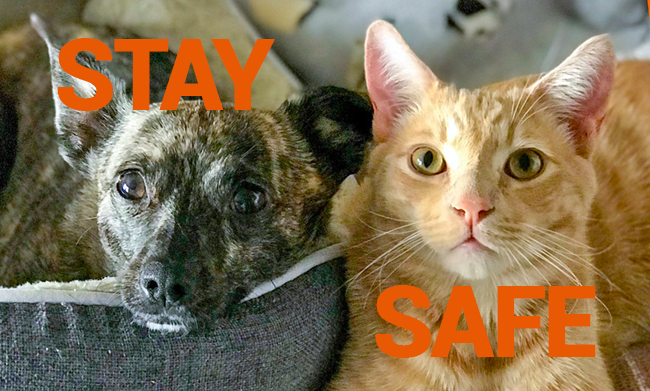
The situation is very fluid. Please check this post or our Facebook page for updates.
Last updated March 17.
With recent developments in COVID-19, Medical District Veterinary Clinic is implementing reduced service in order to keep our staff, clients, and community safe. (Remember, your pets are not at risk from COVID-19, but having people bringing their pets to a public place increases the risks for people.)
We will continue to see SICK patients only; wellness and routine procedures will be postponed.
If your pet is due for a crucial vaccine, such as rabies, and your pet goes to daycare or boarding, please contact us to find out if an exception can be made.
If you have a fever, cough, sore throat, or possible exposure to COVID-19, please do not come to the clinic. Arrange for someone else to bring your sick pet to see us.
Stay safe! We all need to work together—but at least 6 feet apart—to implement these public health measures.
Thank you for your understanding and cooperation! We have the best clients in Chicago! ♥
